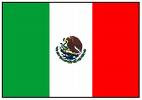
First known Bank-note

Money means different things to different people — to you it may mean coins, notes or credit cards. To some people in developing nations it may mean beads, shells, acorns or human toes. In short, money is whatever we think has value.
The first written records of the use of money date from 1200BC, in the area of land now known as Southern Algeria, although then it was covered with water. Inscriptions in stones record that 'twelve shekels' were paid into the bank account belonging to Algar Hammurabi, in return for 'use of his daughter'. Twelve shekels in today's money would buy you hundreds of prostitutes, all better looking than Hammurabi's daughter, who was by all accounts rather dull.
But let us not get too carried away, because a monetary system existed long before Hammurabi's daughter was bought and sold. That was a system known as bartering.
Bartering Bartering is the word we give to a system known as bartering. This involved exchanging goods rather than paying for them. Bartering was invented in Ancient Egypt around the time of Moses. It meant that, for instance, a bag of potatoes might be swapped for a tin of peaches, or a candle may be swapped for a brown shawl made out of potato sacking, or whatever it was they wore in those drab times. Legend has it that Marco Polo swapped his owls for a ship, without which he couldn't have circumnavigated right around the world, in 987AD.
Bartering is still alive and well today in the school playground — when you trade Pokémon cards for Smurfs or whatever crap you're into nowadays, you are bartering!
But let us not get too carried away, because a monetary system existed long before Hammurabi's daughter was bought and sold. That was a system known as bartering.
Bartering Bartering is the word we give to a system known as bartering. This involved exchanging goods rather than paying for them. Bartering was invented in Ancient Egypt around the time of Moses. It meant that, for instance, a bag of potatoes might be swapped for a tin of peaches, or a candle may be swapped for a brown shawl made out of potato sacking, or whatever it was they wore in those drab times. Legend has it that Marco Polo swapped his owls for a ship, without which he couldn't have circumnavigated right around the world, in 987AD.
Bartering is still alive and well today in the school playground — when you trade Pokémon cards for Smurfs or whatever crap you're into nowadays, you are bartering!
COINS
What did a shekel look like? Well, some examples survive. They are large pieces of solid silver, about the size of a baby's kidney, inscribed with the face of the ruler of the time. They were worth about $700 (2 euros) each in today's money! When the Algerian Empire was overrun by Chinese around the time of Abraham, the coins became worthless.
However, the Chinese realised the enormous value of coinage but had no metal to make them, so instead they used reeds. One reed could be woven into an exquisite decorative coin, 2 inches in diameter (circumference). Now everyone in China became a billionaire, which lead to great economic prosperity, until the great reed disaster of 610BC. At this time goods were still manufactured but no-one could afford to buy them, until Emperor Xiang hit upon the idea of using rice. The Chinese word for rice — dulla — has become the familiar word 'pound' which is still used today.
Despite the Chinese, metal was the substance of choice for coin-making civilizations. The Nigerian Awaka people used coins made from strontium-190, until their race mysteriously disappeared around the time of Christ. When the Japanese invaded Africa they copied the idea, punching holes in their coins to ward off evil spirits. Not sure how that worked, but there you are.
Despite the Chinese, metal was the substance of choice for coin-making civilizations. The Nigerian Awaka people used coins made from strontium-190, until their race mysteriously disappeared around the time of Christ. When the Japanese invaded Africa they copied the idea, punching holes in their coins to ward off evil spirits. Not sure how that worked, but there you are.
Paper Money
Frustrated that they could not carry loose change in their togas, the Romans invented paper money around 1000AD. When Emperor Claudius ran out of money, he wrote IOU notes, promising that he would pay 100,000 lira (that's about 2 shillings) to his debtor. When Claudius fled to Spain around the time of Elija, he took the idea with him, and it was in Barcelona that the first true banknotes in the world were printed. To this day, Spanish notes carry the face of Claudius, who was known in those days as Miguel I.
So, that is how money was invented.
So, that is how money was invented.




No comments:
Post a Comment